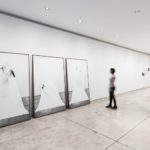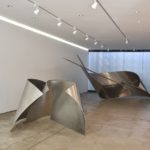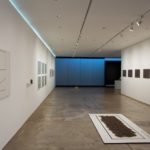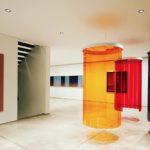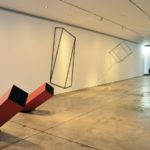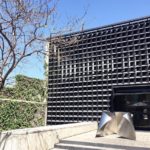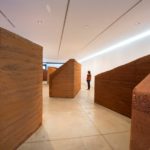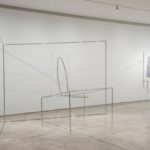About

The consistency and importance of an artist is a result of the refinement of his phases and research. For an artist, as well as for an art gallery, it is crucial to maintain an uncompromising line of work. The history of Raquel Arnaud Gallery is characterized by incisive visual choices and by the endeavor of putting into perspective the trends that it represents.
Forerunner of the artistic brazilian market, Raquel Arnaud Art Gallery played a fundamental role in the development and consolidation of contemporary art. The gallery was founded in 1973, firstly under the name “Gabinete de Arte” and since then has changed through outstanding locations (such as Nove de Julho and Brigadeiro Luís Antônio Avenues) at impressive venues signed by architects such as Lina Bo Bardi, Ruy Ohtake and Felippe Crescenti. From 1992 to 2011, the gallery was located at a venue owned by the “Subdistrito Comercial de Arte”, at Artur de Azevedo Street.
Focusing on the geometrical abstraction segment and concentrating on the investigation of contemporary art (constructivist art and kinetics, art installations, sculptures, paintings, drawings and objects), Raquel Arnaud’s Gallery consolidated its status in Brazil and overseas for its coherency and unique contribution to the valorization and consolidation of the Brazilian art. Artists such as Amilcar de Castro, Willys de Castro, Lygia Clark, Mira Schendel, Sergio Camargo,Hércules Barsotti, Waltercio Caldas, Iole de Freitas, Arthur Luiz Piza among others have had a fundamental contribution for the gallery to achieve this status.
Currently located at 125 Fidalga Street, in São Paulo, Raquel Arnaud Gallery represents nationally and worldwide recognized artists such as Waltercio Caldas, Carlos Cruz-Diez, Arthur Luiz Piza, Sérvulo Esmeraldo, Iole de Freitas, Maria-Carmen Perlingeiro, Carlos Zilio and Tuneu. Young artists such as Frida Baranek, Geórgia Kyriakakis, Daniel Feingold, Célia Euvaldo, Alberto Martins, Carla Chaim, Carlos Nunes and Ding Musa attest to the consolidation of their new contemporary artistic languages.
Raquel Arnaud also founded the Instituto de Arte Contemporânea (Institute of Contemporary Art) in 1997, the only Institution to catalog documents of artist in Brazil.
Photos
Raquel Arnaud
Raquel Arnaud’s first experiences in the art world were in the late 1960’s, when she became acquainted with important artists such as Lasar Segall and Pietro Maria Bardi. She worked from 1968 to 1971 with professor Bardi at the Museum of Art of São Paulo (MASP), in its headquarters on Paulista Avenue. She worked from 1968 to 1971 with professor Bardi in the beginning stages of the new headquarters of the Museum of Art of São Paulo (MASP) at Avenida Paulista.
In 1973, Raquel Arnaud opened her first gallery, namely the “Gabinete de Artes Gráficas”, where she remained until 1979. At that same time she received an invitation from the television channel “Rede Globo de Televisão”, to direct the Galeria Arte Global (Global Art Gallery), where she was able to establish a closer relationship with artists such as Iole de Freitas, Anna Maria Maiolino, Lygia Pape, Roberto Magalhães, Carlos Vergara, among others. In six years at “Arte Global”, she organized around100 exhibitions.
In 1980, with the creation of the “Gabinete de Arte” (Art Cabinet), focused on one of the most significant art segments of the XX Century – geometrical abstraction – Raquel was surrounded by artists/partners/friends such as Sergio Camargo, Lygia Clark, Amilcar de Castro, Mira Schendel, Arthur Luiz Piza, Waltercio Caldas, Tunga, José Resende, Nuno Ramos and Hércules Barsotti. This particular group of artists fueled the growth of “Gabinete de Arte”, whose catalogues, invitations and publications (produced by designers and great artists such as Fernando Lemos, Willys de Castro e Waltercio Caldas) have become a trademark of Raquel Arnaud’s work.
In 2011, with the change of address and name from “Gabinete de Arte Raquel Arnaud” to “Galeria Raquel Arnaud”, Raquel entered a new stage, both professional and personal, that would allow for a greater approximation to the public and clients, as well as exploring new supports. Nonetheless, Raquel’s personal contact with the artists that she represents – the affinity which starts with an enchantment for their art work and develops into friendship and complicity established throughout our lasting partnerships – will always remain as one of her greatest distinctions.


